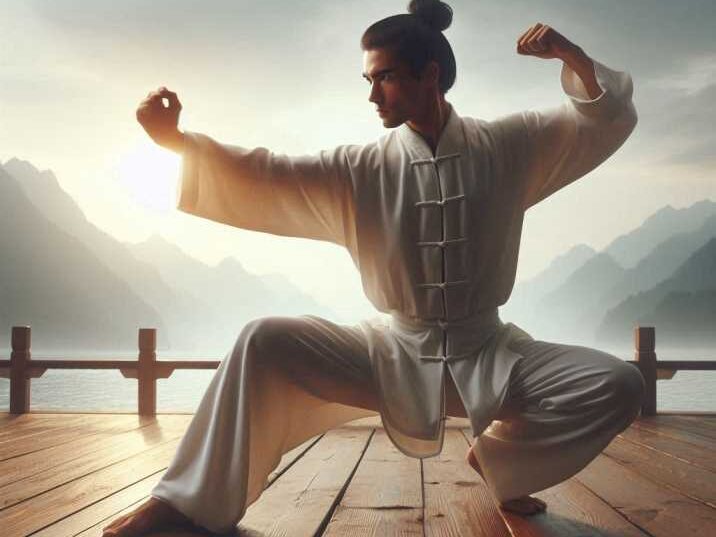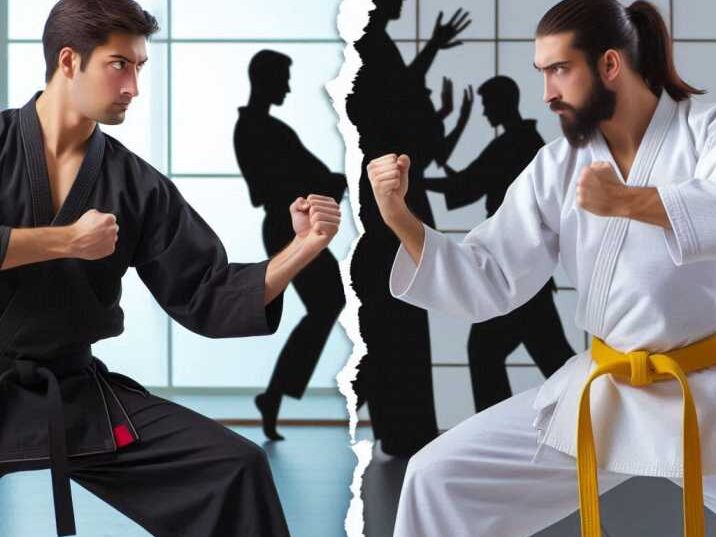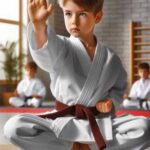Introduction
Table of Contents
Martial arts have been practised for centuries, teaching students self-defence, discipline, and focus. Two of the most popular forms are Kung Fu and Karate. While they might seem similar, they have distinct differences in history, techniques, and philosophies. This article explores the differences between Kung Fu and Karate, focusing on how their training can improve concentration and discipline, benefiting school performance and other activities.
What is Kung Fu?
Kung Fu is a Chinese martial art that encompasses a wide range of fighting styles, each with its unique techniques and philosophies. The term “Kung Fu” translates to “achievement through great effort,” emphasizing the dedication and discipline required to master this art.

History of Kung Fu
Kung Fu dates back thousands of years, with origins in ancient Chinese culture. It was initially practised for self-defence, hunting, and military training. Over time, it evolved into various styles, such as Shaolin Kung Fu and Wing Chun, each with unique movements and techniques.
Techniques in Kung Fu
Kung Fu techniques are diverse and include strikes, kicks, throws, joint locks, and traditional weaponry. The movements are often fluid and circular, inspired by nature and animals. Common styles like Shaolin focus on strength and agility, while Wing Chun emphasizes close-range combat and quick strikes.
What is Karate?
Karate is a Japanese martial art that focuses on striking techniques, including punches, kicks, knee strikes, and elbow strikes. The word “Karate” means “empty hand,” highlighting its emphasis on unarmed combat.
History of Karate
Karate originated in the Ryukyu Kingdom (now Okinawa, Japan) and was influenced by Chinese martial arts. It became widely known in the early 20th century and was later formalized into different styles, such as Shotokan, Goju-Ryu, and Shito-Ryu.
Techniques in Karate
Karate techniques are straightforward and powerful, focusing on linear movements. Practitioners learn various strikes, blocks, and kata (pre-arranged forms) to improve their skills. Karate also includes kumite (sparring) to practice techniques in a controlled environment.
Comparing Kung Fu and Karate
Philosophies
Kung Fu emphasizes internal energy, fluid movements, and harmony with nature. It incorporates philosophical teachings from Buddhism and Taoism, focusing on balance and the flow of energy. Practitioners often engage in meditative practices to enhance their spiritual and mental well-being. The fluid and circular movements of Kung Fu are inspired by the natural world, reflecting the philosophy of adapting and flowing with the environment.
Karate focuses on discipline, respect, and self-improvement. It follows a structured approach with defined ranks and a clear progression system, emphasizing personal growth and mastery of techniques. Karate practitioners adhere to a strict code of conduct, fostering respect for oneself and others. The training is systematic, with an emphasis on building character, mental strength, and a disciplined approach to life’s challenges.
Training Methods
Kung Fu training includes forms (sequences of movements), conditioning, sparring, and weapons training. Practitioners spend long periods mastering fluid and dynamic movements, which require flexibility and coordination. Training often involves practising various stances, strikes, and defensive techniques, along with traditional exercises to build strength and endurance. The use of weapons such as staffs and swords adds a layer of complexity and skill development.
Karate training involves practising basic techniques, kata (pre-arranged forms), kumite (sparring), and physical conditioning. The rigorous training focuses on perfecting each movement with precision and power. Students learn to execute powerful strikes, blocks and kicks with accuracy. Kata practice helps in understanding the flow of techniques, while kumite allows for practical application in controlled sparring sessions. Physical conditioning exercises are integral, enhancing strength, speed, and agility.
Benefits of Training
Improved Focus and Concentration: Both Kung Fu and Karate require intense concentration during practice. This mental discipline helps students improve their focus in school and other activities. Detailed attention to technique and form in martial arts training translates to better cognitive skills and the ability to concentrate for extended periods.
Discipline and Self-Control: Regular training instils discipline, teaching students to set goals and work diligently to achieve them. Martial arts encourage a structured routine, adherence to rules, and respect for instructors and peers. This disciplined approach fosters self-control and the ability to manage emotions and impulses effectively.
Physical Fitness: Both martial arts improve strength, flexibility, and endurance, promoting overall health and well-being. The diverse range of exercises involved in Kung Fu and Karate training helps in developing a well-rounded fitness level. Enhanced physical capabilities lead to better posture, increased energy levels, and a reduced risk of injuries, contributing to a healthier lifestyle.
Table of Information
| Aspect | Kung Fu | Karate |
|---|---|---|
| Origin | China | Japan (Okinawa) |
| Meaning | Achievement through great effort | Empty hand |
| Techniques | Fluid, circular movements | Linear, powerful strikes |
| Philosophies | Harmony with nature, internal energy | Discipline, respect, self-improvement |
| Training Methods | Forms, conditioning, sparring, weapons | Basic techniques, kata, kumite, conditioning |
| Benefits | Focus, discipline, physical fitness | Focus, discipline, physical fitness |

Conclusion
Both Kung Fu and Karate offer unique benefits, from improved focus and discipline to physical fitness and self-defence skills. Understanding the differences between these two martial arts can help you choose the right one for your needs. Whether you prefer the fluid movements of Kung Fu or the powerful strikes of Karate, both arts require dedication and hard work, leading to personal growth and improved concentration in all areas of life.
Five Frequently Asked Questions (FAQs)
1. Which is better for self-defence, Kung Fu or Karate?
Both Kung Fu and Karate are effective for self-defence. The best choice depends on personal preference and which style aligns better with an individual’s physical abilities and interests.
2. Can children learn Kung Fu or Karate?
Yes, both Kung Fu and Karate are suitable for children. They teach discipline, focus, and self-control, making them excellent activities for young learners.
3. How long does it take to master Kung Fu or Karate?
Mastering martial arts takes years of dedicated practice. The time required varies based on individual commitment, natural ability, and the style practised.
4. Do you need special equipment for Kung Fu or Karate?
Basic training for both martial arts requires minimal equipment. However, advanced Kung Fu may include traditional weapons, while Karate may involve protective gear for sparring.
5. Are there different styles within Kung Fu and Karate?
Yes, there are various styles within both Kung Fu and Karate. Each style has unique techniques, forms, and philosophies.


